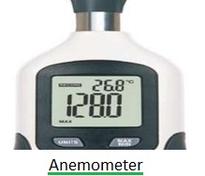Absolute vs. Specific vs. Relative Humidity: Key Differences Explained
This article clarifies the differences between absolute, specific, and relative humidity, explaining their definitions, formulas, and key characteristics.
Showing 20 posts (Page 1 of 2)
Advertisement
This article clarifies the differences between absolute, specific, and relative humidity, explaining their definitions, formulas, and key characteristics.

Explore the differences between accelerometers and gyroscopes, their functions, and applications in modern devices. Learn about their unique measurements.

This article explores the pros and cons of various types of altimeters, including pressure, sonic, radar, and GPS-based models.

This article explores the benefits and drawbacks of using anemometers, focusing on their versatility and limitations.

Explore the pros and cons of using Resistance Temperature Detectors (RTDs), covering their stability, accuracy, limitations, and ideal applications.

Explore the benefits and drawbacks of spectrum analyzers, essential tools for frequency domain analysis, including swept, FFT, and real-time models.

This article compares analog and digital instruments, detailing their key features, differences, and examples.

Explore the fundamental differences between analog and digital oscilloscopes, focusing on their operational principles and display methods.
This article compares drain efficiency and power added efficiency of Power Amplifier (PA).

Explore the differences between zero-order, first-order, and second-order systems, including their response characteristics and examples.

Explore the key differences between ideal and real fluids, focusing on compressibility, viscosity, surface tension, and flow type.
This article compares Lifi and Bluetooth, detailing their speeds, applications and key differences to help users choose the right wireless technology.
This article compares Lifi and Ethernet, detailing their speeds, applications and key differences to help users choose the right internet technology.

This article details the differences between linear and rotary encoders, including their applications and benefits.
This article compares manual and automation testing, outlining their definitions, advantages, and disadvantages for early bug detection in product development.

Explore the differences between microscopes and telescopes, focusing on their purposes, magnification, and typical applications.

Explore the fundamental differences between open and closed loop control systems, their characteristics, and applications.

Explore the pros and cons of pneumatic actuators, including their benefits like simplicity and drawbacks such as inefficiency.
Explore the key differences between Quality Assurance (QA) and Quality Control (QC) in software development, highlighting their distinct roles and approaches to quality management.

An overview of spring control mechanisms, including their advantages such as portability and uniform scales, as well as disadvantages like temperature sensitivity and limited adjustability.
Advertisement